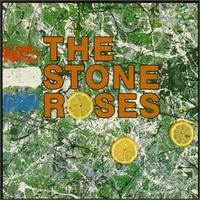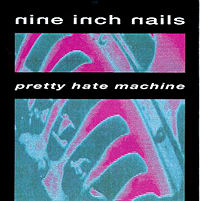 Movies and TV
Movies and TV  Movies and TV
Movies and TV  History
History 10 Momentous Events That Also Occurred on July 4th
 Animals
Animals 10 Times Desperate Animals Asked People for Help… and Got It
 Movies and TV
Movies and TV 10 Movie Flops That Found Their Way to Cult Classic Status
 History
History 10 Things You Never Knew About Presidential First Ladies
 Movies and TV
Movies and TV 10 Zombie Movies That Will Actually Terrify You
 Humans
Humans 10 Times Scientists Were Absolutely Sure… and Absolutely Wrong
 Our World
Our World 10 Pivotal Moments for Life on Earth
 Movies and TV
Movies and TV 10 Most Realistic Medical TV Shows of All Time
 Creepy
Creepy 10 Eerie & Mysterious Ghosts of the Pacific Coast
 Movies and TV
Movies and TV 10 Music Biopics That Actually Got It Right
 History
History 10 Momentous Events That Also Occurred on July 4th
 Animals
Animals 10 Times Desperate Animals Asked People for Help… and Got It
Who's Behind Listverse?

Jamie Frater
Head Editor
Jamie founded Listverse due to an insatiable desire to share fascinating, obscure, and bizarre facts. He has been a guest speaker on numerous national radio and television stations and is a five time published author.
More About Us Movies and TV
Movies and TV 10 Movie Flops That Found Their Way to Cult Classic Status
 History
History 10 Things You Never Knew About Presidential First Ladies
 Movies and TV
Movies and TV 10 Zombie Movies That Will Actually Terrify You
 Humans
Humans 10 Times Scientists Were Absolutely Sure… and Absolutely Wrong
 Our World
Our World 10 Pivotal Moments for Life on Earth
 Movies and TV
Movies and TV 10 Most Realistic Medical TV Shows of All Time
 Creepy
Creepy 10 Eerie & Mysterious Ghosts of the Pacific Coast
15 Great Albums Of The Eighties
The eighties were a decade of change in music. Popular thought states that the mainstream, under the influence of MTV, started to become more streamlined and less experimental, while underground or alternative music began receiving greater attention than ever before. Certainly, this is neither completely true nor is it without some substance. What is undisputed is that the perception of music changed due greatly to the aforementioned MTV. An artist’s success was directly tied to their image, which in many cases was more important than the music. It was no longer enough to have a hit song; you needed a hit video to go along with it. While this new dynamic led many artists to abandon the art of the album, many others became more attached to the idea in order to keep the album from dying. Here are some of the albums that kept the medium alive during the decade.
15. Back In Black AC/DCWikipedia

The ultimate party album; when this one goes on at get togethers, everybody enjoys it. While AC/DC has never been known for any lyrical or musical depth, they certainly can write catchy songs, and no where is this clearer than Back In Black. The album was the band’s first with replacement singer Brian Johnson. Johnson’s voice is remarkably similar to Bon Scott’s, and this allows the band to continue to develop their sound from 1979’s Highway To Hell. The album contained hits “Hells Bells,” “Back In Black” and “You Shook Me All Night Long,” along with popular tracks “Have A Drink On Me” and “Rock And Roll Ain’t Noise Pollution.”
Learn how to play guitar like a pro with AC/DC – Back in Black – Guitar TAB Songbook at Amazon.com!
14. Born In The U.S.A. Bruce SpringsteenWikipedia

Famously misunderstood, Born In The U.S.A. is one of Springsteen’s most popular albums. The title track, which is the most famous, is a tale of Vietnam veterans trying to reestablish themselves in society. However, the song is often misread to be about simple patriotism. The most famous example of this was Ronald Reagan‘s use of the song as his campaign slogan. Those in the know have been laughing about it for years since.
13. 1984 Van HalenWikipedia

By 1984 (the year), Van Halen had become not only the biggest band in the world, but guitarist Eddie Van Halen had played on hit records for others, such as Michael Jackson’s Thriller. This work outside the band brought new influences in, and 1984 contains a big dose of synthesizer. Unlike many of other records from the period on which there is synthesizer, the record doesn’t sound quite as dated. Songs like “Jump” use the synth-line as the main hook, and yet it still sounds perfectly modern when played in sports arenas. “Panama” remains one of the band’s most rocking songs. However, none of those songs can hold a candle to “Hot For Teacher,” especially in the wake of its racy video.
12. The Stone Roses The Stone RosesWikipedia

Before there was Oasis, before there was Britpop, there was the Stone Roses. The band was led by dueling personalities Ian Brown (vocals) and John Squire (guitar). The band mixed electronica/dance music with guitar pop of the sixties and a big helping of arrogance. The band’s sound and image is captured in the first track, “I Wanna Be Adored.” The dance beat builds up to a crescendo, where Brown sings about wanting to be a star. The vibe continues through “She Bangs The Drums” and “Waterfall.” While not all the songs are dancy, such as “Elizabeth My Dear,” most of them are or at least keep up the positive atmosphere.
11. Surfer Rosa The PixiesWikipedia

While the production of Steve Albini is severely overrated, the Pixies never sounded as alive as they did on Surfer Rosa. Black Francis (also known also by a plethora of other names), submits a batch of songs that he has never bettered. Movie fans will recognize “Where Is My Mind?” as it played in the closing credits to the popular movie “Fight Club.” The song plays through a simply, eerie melody before the music drops out and all that is left is the strange backing “vocals.” The majority of the remaining songs follow the Pixies trademark “soft verse/loud chorus” formula, a technique that was later picked up and popularized by Nirvana. Other album highlights include “Bone Machine,” “Gigantic,” and the lovable “Tony’s Theme.”
10. Empty Glass Pete TownshendWikipedia

By the dawn of the eighties, the Who had already lost a member (Keith Moon, by means of overdose), gone through numerous financial/managerial problems, and spent nearly 20 years together (dating from their earliest days as the Detours). The wear was evident, and for the first time de facto songwriter Pete Townshend was writing material for things other than the band. While his first solo album came out nearly 10 years earlier in the form of Who Came First, this is Townshend’s real debut as a solo artist. The album is nearly his most confessional record behind only The Who By Numbers, and contains his best batch of songs since, well, The Who By Numbers. Some of the songs date back to the sessions for the Who Are You album (“Keep On Working” and “Empty Glass”), while others were more recent. For the most part, these are all songs that could have been performed ably by the Who. The Who’s trademark synth/keyboards are present in key tracks like “Let My Love Open The Door” as well as “And I Moved.” However, where Roger Daltrey tries to overpower vocally, Townshend uses more shades of his voice, and as such the record takes on a more mellow feel than it would have if performed by the Who.
9. The Joshua Tree U2Wikipedia

The Joshua Tree is thought to be U2’s album about America. The Joshua Tree is the biggest selling album in Irish band U2’s catalog. The album is a bit of a departure from the sound of their earlier albums, as the rawer instrumental sounds are scrapped away in favor of more subtle spacey guitar. “Where The Streets Have No Name” kicks off the album by setting a cerebral mood. The outer stratosphere music is matched by Bono’s lyrics of nowhere-ness. The band tries out (to great success) gospel on “I Still Haven’t Found What I’m Looking For,” which pushes Bono’s voice to the limit of his range. This creates a feeling of desperation, which is exactly what makes the song a winner.
8. Master Of Puppets MetallicaWikipedia

Before the psychiatric therapy, before the “Black Album,” and before Jason Newsted, there was Master Of Puppets, considered by many to be the definitive thrash metal album. Certainly it is the best album Metallica released during its “underground” period. The album follows the structure of its predecessor closely, i.e. the same types of songs are present and in a similar order. The band refines the art of the breakdown on “Battery,” which opens the album. Following on the heals of “Battery” is the title track; a song which musically and lyrically brings the listener to an understanding of powerlessness and lack of control. In fact, most of the album deals with these themes. Even the instrumental is listenable both initially and after considerable repetition. On top of it all, the musicians are on top of their game.
Join Amazon Prime – Watch Over 40,000 Movies & TV Shows Anytime – Start Free Trial Now at Amazon.com!
7. Appetite For Destruction Guns N’ RosesWikipedia

Rock from the Sunset Strip was no longer legitimate by 1987, the year Guns N’ Roses changed the course of the late 80s with their ugly, bluesy brand of rock found on Appetite For Destruction. GNR were not nice boys, they were dangerous to you and themselves. Appetite is considered the last great album to be recorded in the “classic” method of piecing the tape together by hand rather than digital recording. “Welcome To The Jungle” has one of the great riffs, which is matched in quality by “Sweet Child O’ Mine.” The album will never go out of style, not as long as there are sporting events for which they will be played. Think of this when you hear the name Guns N’ Roses and not that album we’ve been waiting over a decade to hear.
6. This Is Spinal Tap (soundtrack) Spinal TapWikipedia

This Is Spinal Tap was the soundtrack to one of the all time funniest movies (and certainly the best about rock and roll). In an attempt to mock the excess of rock, the “rockumentary” follows a band, Spinal Tap, on its 1982 tour and chronicle the moronic acts of a rock band. The biggest laugh however was that the soundtrack, on which the actors actually play, was better than many bands could ever dream of being. Anthems like “Big Bottom,” a song that does not stray from expectations, and “Stonehenge” both references and mocks Black Sabbath. At all times the songs are funny, and unrelentingly catchy. The soundtrack was so good many people actually believed Spinal Tap was a real band.
5. Pretty Hate Machine Nine Inch NailsWikipedia

Nine Inch Nails did not become a household name until 1994’s The Downwards Spiral, although the band, or rather a name under which Trent Reznor operates by himself, has been in existence since the eighties. Pretty Hate Machine was the band’s debut, and what a debut it was. What separates Machine from any other Nine Inch Nail’s record is there is no broad concept for story which the songs progress, rather they are all songs about Trent Reznor at the time. “Head Like A Hole” shows Reznor’s belief in religion as a business, while “Terrible Lie” shares his thoughts on the promises of Christianity. His sexual side is also on full display in “Sin” and combinations of all of these appear throughout the other songs. While industrial rock existed before Machine, Nine Inch Nails first record gave the genre a face, and that face was Trent Reznor.
4. 1999 PrinceWikipedia

Prince had some hits before 1982, but his first real taste of stardom came with 1999. The apocalyptic title track contains one of the all-time great synth loops, as well as some truly thrilling vocals from Prince. Only Prince would view the end of the world as an opportunity to party, and he declares those intentions throughout the song. “Delirious” is another gem; the main melody of the song is carried on some distorted instrument which is unknown to this writer. However, the real prize is “Little Red Corvette,” which is just a perfect slice of pop so smooth and polished that once you get it in your head it may never leave, ever.
3. Thriller Michael JacksonWikipedia

After the success of Off The Wall, Michael Jackson called in the big guns for what is one of the best selling albums of all time. The amount of copies of Thriller sold is a story on its own, the music is another. Paul McCartney, Eddie Van Halen and others make prominent appearances on the album, but that’s not to say that their presence alone is to be credited to the album sales. Seven of the nine tracks on the album charted… in the top ten! Songs like “Billie Jean” and “Beat It” have been covered by so many artists, oddly even by grunge veteran Chris Cornell and metal favorites Metallica respectfully. The album became the blueprint for mega-success for the ensuing ten years.
2. War U2Wikipedia

U2 aimed for greatness from the outset, but it wasn’t until 1983’s War that they actually achieved it. From the opening drums of “Sunday Bloody Sunday,” it’s clear that the band have brought new focus to their sound, and this time they are more than just politically conscious, they are politically relevant. Similar themes are continued in “The Refugee” as well as the popular “New Years Day.” While War is overlooked in the post-Joshua Tree world, it must be noted that at one point, U2’s sound was grounded in a post-punk world, rather than the outer space of their late decade arena rock.
1. Sign O’ The Times PrinceWikipedia

Prince was a megastar in the eighties, greatly due to the success of the movie and soundtrack Purple Rain. As the eighties began to drawn to a close, Prince released the socially relevant Sign O’ The Times to mark the period. In the title track, Prince sings about everything from the aftermath of the decade’s drug culture to AIDS. However, the album is far from a one trick pony, as every song has at least a few indelible hooks to keep them from leaving the head for days. Prince’s legendary weirdness creeps its way into the album with “If I Was Your Girlfriend,” as does the beauty of “Forever In My Life.” What is just as astounding as the songs is the fact that the album is so consistent and interesting while being over an hour and 20 minutes.
Contributor: Jason Hirschhorn








